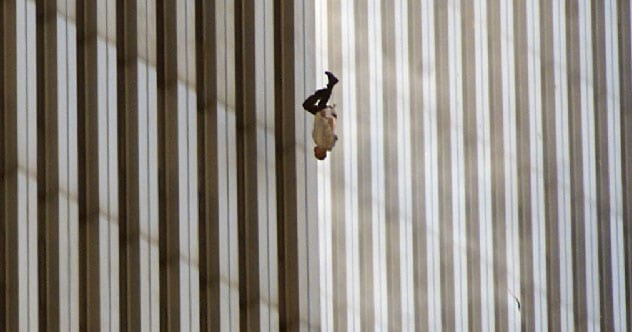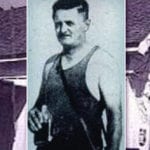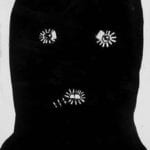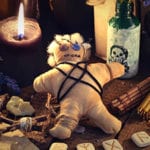 Mysteries
Mysteries  Mysteries
Mysteries  History
History 10 Surprising Stories About the Texas Rangers
 Humans
Humans 10 Philosophers Who Were Driven Mad by Their Own Theories
 Miscellaneous
Miscellaneous 10 Video-Game-Worthy Weapons and Armors from History
 Weird Stuff
Weird Stuff 10 Psychics Who Accurately Predicted Wartime Events
 The Arts
The Arts 10 Pieces of Art Inspired by a Broken Heart
 Health
Health 10 Science Fiction-Sounding New Medical Treatments
 History
History 10 Surprising Facts About the Father of Submarine Warfare
 Space
Space Ten Astonishing New Insights into Alien Worlds
 Weird Stuff
Weird Stuff 10 Bizarre Summer Solstice Rituals Still Practiced Today
 Mysteries
Mysteries Top 10 Haunting Facts About the Ghost Ship MV Alta
 History
History 10 Surprising Stories About the Texas Rangers
 Humans
Humans 10 Philosophers Who Were Driven Mad by Their Own Theories
Who's Behind Listverse?

Jamie Frater
Head Editor
Jamie founded Listverse due to an insatiable desire to share fascinating, obscure, and bizarre facts. He has been a guest speaker on numerous national radio and television stations and is a five time published author.
More About Us Miscellaneous
Miscellaneous 10 Video-Game-Worthy Weapons and Armors from History
 Weird Stuff
Weird Stuff 10 Psychics Who Accurately Predicted Wartime Events
 The Arts
The Arts 10 Pieces of Art Inspired by a Broken Heart
 Health
Health 10 Science Fiction-Sounding New Medical Treatments
 History
History 10 Surprising Facts About the Father of Submarine Warfare
 Space
Space Ten Astonishing New Insights into Alien Worlds
 Weird Stuff
Weird Stuff 10 Bizarre Summer Solstice Rituals Still Practiced Today
10 Chilling Voices From 9/11
Most sudden calamities – murders, car crashes, natural disasters – don’t offer a chance to say goodbye. But in a terrifying twist of fate, the terrorist attacks of September 11, 2001 offered exactly that for thousands trapped in towers and stranded on hijacked airliners.
As the situation deteriorated, many victims realized that their chance of survival was approaching zero. So after desperately searching for exits, many spent their final moments speaking or leaving messages for loved ones. Their last words are mortifying and heartbreakingly human.
10 NYC Horrors That Were As Traumatic As 9/11
10 Madeline Sweeney: “We are flying way too low.”
Madeline Sweeney was an American Airlines flight attendant for over a decade. On September 11, 2001, she covering for a sick colleague on a flight from Boston to Los Angeles. Before takeoff, she called her husband from the plane. She was sad about being unable to take her daughter, who had recently started kindergarten, to school that morning.
At about 8:15am, American Airlines 11 became the flight plane hijacked that day, by a team of terrorists led by ringleader Mohamed Atta. “We have some planes”, Atta accidentally broadcast, mistakenly thinking he was using the internal address system. “Just be quiet and we’ll be OK. We are returning to the airport.”
Sweeney and her colleague, Betty Ong, took turns calling airline security teams on the ground. Sweeney’s ability to calmly identity the hijackers’ seat numbers became some of the day’s first leads for investigators. At 8:46am, she was on the phone with manager Michael Woodward when the plane made its final run, southward over Manhattan toward the North Tower.
“I see water. I see buildings. I see buildings! We are flying low. We are flying very, very low. We are flying way too low. Oh my God we are flying way too low. Oh my God!”
“Seconds later,” Woodward said, “there was a very, very loud static on the other end.”[1]
9 Jim Gartenberg: “Take It Easy.”
September 11th was supposed to be Jim Gartenberg’s last day working at the World Trade Center. His employer, commercial real estate firm Julien J. Studley Inc., had transferred him to its Midtown Manhattan offices. In fact Gartenberg, 35, was cleaning out his desk on the 86th Floor of the North Tower when American Airlines Flight 11 slammed into it at 8:46am.
The plane struck floors 93-99 – several stories about Gartenberg’s office. However, the impact left piles of debris that, per a phone call Gartenberg made to Midtown office colleague Margaret Luberda, blocked his exit. Soon, fire compounded the problem. “There’s a fire,” he said to his pregnant wife, Jill. “I love you, tell Nicole” – the couple’s two-year-old daughter – “I don’t know if I’m going to be OK.”
Remarkably, Gartenberg’s next call was to ABC News, who carried the conversation live on air. Calmly explaining where he was, what happened and who he was with, his composure during the two-minute conversation was heroic. In fact, Gartenberg doesn’t discernibly panic even after learning that, unbeknownst to him, not one but two plane crashes had occurred – one in each building.
Instead, Gartenberg sought to comfort the thousands of family members with unaccounted-for loved ones. “I want to tell anybody who has a family member in the building that the situation is under control. Please… take it easy.”
This wasn’t ignorance or denial. Next, Gartenberg called his Midtown colleague again: “Margaret, I didn’t want to tell them how bad it was,” he replied. “I didn’t want to worry the other families.” Gartenberg perished.[2]
8 Rob Sibarium: “I thought we were going into the ocean.”
For many near the impact zones, location meant everything. Despite being three floors above Jim Gartenberg, MetLife Insurance employee Rob Sibarium survived that day – but only through the actions of two noteworthy 9/11 heroes.
Sibarium and about a dozen colleagues were on MetLife’s 89th floor offices when the first plane struck the North Tower just a few stories above. “The building bent so far, I thought we were going into the ocean,” he remembers. With fires breaking out around them, Sibarium and his coworkers retreated to a law firm down the hall.
Soon, the situation there also become untenable as the corridor filled with smoke and flames. “The floor was actually melting,” Sibarium said. The exits were blocked. They were doomed.
And then, suddenly, they were delivered.
“We were pounding on those doors,” said Nathan Goldwasser, a colleague of Sibarium, “and almost like a miracle, we heard a voice on the other side yelling, “Get away from the door!’ The next thing, there’s a crowbar coming through the wall.”
Their savior was either Port Authority architect Frank de Martini or his colleague, Pablo Ortiz. The duo is credited with saving more than 75 lives in the North Tower that day. Both perished when the building collapsed – continuing to save others throughout the ordeal despite having ample time to escape themselves. Their story is told in a riveting documentary, ”Heroes of the 88th Floor”.[3]
7 Sean Rooney: Fatal Decision

For family members of those in the South Tower – the second one hit – calls had potential to be double-edged swords. Beverly Eckert received multiple calls that morning from her husband, Sean Rooney, a vice president with Aon Corporation. They first spoke around 8:50am, following the impact on the opposite tower. He reported that an accident had happened in the neighboring building, and assured Beverly he was safe.
Aon had over 400,000 square feet of office space in the South Tower, spread out over several floors. On the 100th, Jennifer Fahey urged colleagues to leave immediately. “You had people wanting to grab purses or not believing what they saw,” she recalled. “One gentleman was going back to get some files, and I was yelling at him, `Please, it’s not important!’” That man later called his wife from an upper-floor conference room. He died.
Up on the 105th floor, Rooney hadn’t heard Fahey’s plea, and unfortunately also chose to remain. At 9:30am – 27 minutes after the second plane crashed 20 stories below him – he called Beverly again. Her heart soared as the phone rang, an indication Sean had gotten out safely. He hadn’t.
“I knew right away that Sean was never coming home,” she told reporters.
“After long minutes of talking, he whispered ‘I love you’ over and over. Then I suddenly heard this loud explosion.” It was 9:59am, and the tower was collapsing.
“I called his name in the phone over and over,” said Beverly. “Then I just sat there huddled on the floor holding the phone to my heart.”[4]
6 Brad Fetchet: “I saw a guy fall… all the way down.”
Many of the victims lost in the South Tower align with Sean Rooney’s relatively calm demeanor. While in hindsight their decision to remain on the upper floors of a skyscraper whose twin was profusely smoking and smoldering seems terribly misguided, at the time many didn’t realize the explosion in the neighboring tower was a plane crash – or, if they did, thought it was an accident.
In between crashes, there were just 17 disorienting minutes for those on the South Tower’s upper floors to descend to safety. Their deaths, then, were both tragically avoidable yet entirely understandable.
Still, the case of Brad Fetchet sticks out. Fetchet, 24, worked for financial firm Keefe, Bruyette & Woods on the 89th floor of the South Tower. Shortly after the plane struck the North Tower, he called his parents. The message he left (about 17:30 into the video) was shockingly even-keeled for what he’d just witnessed.
“I’m obviously alive and well over here… pretty scary experience though. I saw a guy fall out of probably the 91st story, all the way down.”
Frustratingly, Fetchet had no intention of leaving his office. The message concludes: “You’re welcome to give a call. I think we’ll be here all day. Love you.”
10 Disturbing Raw Videos From 9/11
5 South Tower Intercom: “Please remain at your desks.”
Why did folks like Rooney and Fetchet remain? Well, partly because they were instructed to.
Audio of the South Tower’s intercom system from 9/11 is difficult to find but, as dramatized in “Inside the Towers” (about 8:50 into this video), workers in the unaffected tower were told to stay put immediately following the North Tower explosion – even while many who called NYC’s emergency response number were told to evacuate.
Worse, many South Tower workers who began their descent were told to return to their offices on the upper floors. Incredibly, these instructions were given by authority figures who often knew less about what had just happened than those they were ordering back upstairs – many of whom had seen the gaping, burning hole in the adjacent tower from their windows.
There’s no satisfying explanation for why panicked workers – some who’d gotten as far downstairs as the LOBBY – were told to return to their offices. The idea that the identical twin of a building rocked by a major explosion (and which had been bombed just eight years earlier) was the safest place to be is insane. The only viable explanation is that authorities, realizing the massive undertaking of evacuating the North Tower, didn’t want the plaza clogged with unnecessary evacuees from the South Tower.[5]
4 Christopher Hanley: “Please hurry.”
For those trapped in the towers, the two most repeated words to emergency response workers may have been “please hurry.” Many of the day’s audio recordings showcase a terrible truth: Assessing the deteriorating conditions and sheer height of the building, many of those trapped displayed doubt that firefighters could reach them in time, if at all. On the other end of the line, emergency responders were left placating without making promises that were simply impossible to keep.
The emergency call made by Christopher Hanley, who was attending a conference at Windows in the World restaurant on the North Tower’s 106th floor, exemplifies this mix of urgency and reality. Just minutes after American Airlines Flight 11 slammed into the floors directly beneath him, conditions on the top floor were steadily worsening.
“I can see the smoke coming up from outside the windows,” Hanley says, to which the emergency operator replies with a simple “All right, we’re on the way.”
“Okay, please hurry,” Hanley pleads.
After instructing Hanley to open a window if he must – a stupid suggestion not only because fire thrives on oxygen, but because the 106th floor of a building isn’t going to have openable windows – the operator provides the understatement of the century: “It’s going to be a while because there’s a fire going on downstairs.”
“Alright,” Hanley says, “please hurry.”
Hanley died that day, as did every single person above the impact zone in the North Tower. Their fates were sealed the instant the plane hit, destroying all stairwells to safety.
3 Melissa Doi: “I’m going to die, aren’t I?”
Melissa Doi, 32, was a manager at IQ Financial Systems on the 83rd floor of the South Tower, the second impacted. The plane sliced through swaths of floors 77-85. With Doi’s offices so near the strike zone, it didn’t take long for the situation to deteriorate into desperation.
She called in the emergency (the number, ironically, is 9-1-1) at 9:17am, just 14 minutes after the plane slammed into her building. “The floor is completely engulfed and we can’t breathe,” she says, hyperventilating, “and it’s very, very, very hot.”
Doi’s call further showcases the futility of the dispatchers, who were left to placate the panicked and make dubious-at-best promises of help en route. But in addition to being unconvincing, Doi’s dispatcher makes a mistake that can only be described as detached and dumb. After Doi states several times that she can’t see around her, the dispatcher stupidly says “but there’s no smoke, right?”
“OF COURSE THERE’S SMOKE!” Doi shouts. Then, a few seconds later, “I don’t see any air anymore!”
Then, the question anyone in Doi’s situation would ask: “I’m going to die, aren’t I?” The dispatcher’s response was a heartbreaking hedge. “No, no, no, no…,” she denies, followed quickly by a thoroughly unassuring “ma’am, say your prayers.” Doi lost her life that day.
2 Ceecee Lyles: “I’m so sorry, baby.”
United Airlines Flight 93 was the only hijacked plane that didn’t hit its target. The largest reason for that was a 45-minute delay at the airport prior to takeoff, which gave passengers time to learn of the attacks and surmise, correctly, that their only chance of surviving was retaking control of the aircraft. Though the plane crashed, their efforts prevented a fourth high-profile impact – likely the US Capitol Building or White House.
As news of the other three crashes trickled in, Flight 93’s passengers and flight attendants frantically phoned loved ones. Along with panic, these calls are often fraught with stunned bewilderment and morbid abandonment guilt.
The voice message flight attendant Ceecee Lyles left for her husband showcases this macabre mélange. It begins matter-of-factly, even calmly: “Hi baby. You have to listen to me carefully. I’m on a plane that’s been hijacked. I’m calling from the plane.”
Her voice begins cracking as she cuts to the chase, asking that her children be told she loves them before apologizing to her husband for what she suspects is his pending widowerhood: “I’m so sorry baby.”
Finally, the horrible – and perhaps purposefully buried – lede. “There’s three guys, they’ve hijacked the plane … I heard that there’s planes that have been flown into the World Trade Center.” “I HOPE…” – she stresses this word – “…to see your face again, baby. I love you.”[6]
1 Tom McGinnis: “You don’t understand. There are people jumping.”

When the planes hit the Twin Towers, the area’s cell phone bandwidth and land lines became overwhelmed with calls. As a result, some people trapped on the upper floors had extreme difficulty getting through to a worried loved one.
Trapped on the North Tower’s 92nd floor, Carr Futures stock trader Tom McGinnis was unable to reach his wife Iliana until 10:18am – more than 90 minutes after the first plane struck directly above him. By then, McGinnis and a handful of colleagues had retreated to an office surrounded by flames. McGinnis also may have known that, about 20 minutes earlier, the South Tower had completely collapsed.
Dismayed at learning her husband was still in the burning building, Iliana recalls the conversation: “Are you O.K., yes or no?” she demanded.
“We’re on the 92nd floor in a room we can’t get out of,” Tom said. “I love you. Take care of Caitlin [the couple’s daughter].”
Understandably, Iliana wasn’t ready to concede defeat. “Don’t lose your cool,” she urged. “You guys are so tough, you’re resourceful. You’ll get out of there.”
“You don’t understand,” Tom said, discouraging his wife’s false hope. “There are people jumping from the floors above us.”
The gravity of the situation sunk in for Iliana. All she could muster was “Don’t hang up.”
His last words before the line disconnected: “I got to get down on the floor” The tower collapsed just minutes later, at 10:28am.[7]
Top 10 Incredible Tales From 9/11








